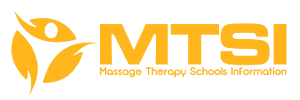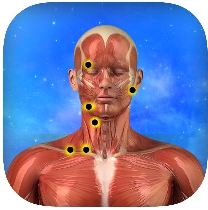
I am a solo practitioner whose practice is housed at Studio Helix, a personal training studio in the college town of Champaign Urbana in central Illinois. Most of my clients range from middle aged to geriatric, and begin seeing me due to experiencing pain.
Like the personal trainers I share space with, most of my clients are on a recurring schedule, typically weekly or biweekly. I don’t do the Swedish relaxation massage I learned in school anymore but will do seated styles including Indian Head Massage for a relaxation focus.
I am currently moving into teaching continuing education workshops for massage therapists. I would like to build some time in my week to teach Qigong as well.
2. Tell us why you chose to go into massage and at what point in your life did you decide to do so? What were you doing at the time? Where did you first hear about the massage career? What factors influenced your decision? What were you looking to get out of this decision?
After a dozen years in IT, running the gamut from tech support to applications programming to project management, I became a stay at home mom for 5 years. When my son was entering Kindergarten, I wanted to return to the workforce, but I was obsolete in my original field, and also 40 years old.
IT also has the disadvantage of long hours and death marches to finish projects. I wanted to find something that I could do part time while my son was in school, that wouldn’t require several years of schooling. My mother had recently passed from ALS, and one of the ONLY things that was any help to her as her disease progressed was receiving massage.
Just simple relaxation massage. In addition, my husband would periodically throw his back out needing days of rest and PT to recover. It seemed like something to try as a career change. Worst case, I could use my training to help my family.
3. What were some of your questions and concerns before further pursuing your massage therapy goals? Talk about concerns with school and the profession itself.
I was in a good position at that point – I had money saved up and had other options in case massage therapy didn’t work out. I really didn’t have many concerns at the time.
4. What is your specialty and what are the top three contributing factors to your success today?
My main massage specialty is in pain remediation work. Within that I do two main blends of modalities: Targeted Knotwork, which is a deep tissue massage (direct MFR & MAT based), and Gentle Pain Calming, which is very light in pressure but very focused (MLD and indirect MFR based).
In my massage work, my ability to troubleshoot and debug which I developed as a computer programmer helps me with assessment and treatment planning. The geek skills I did keep up have allowed me to do my own website work.
My Taiji and Qigong practice is the secret sauce to the presence I create and my palpation skills. It also helps me with body mechanics, being able to deliver deep pressure with minimal stress to my body, and provides energy and perspective to help avoid burnout. Past experience as an entrepreneur and time doing technical support helped me enter the field with great customer service skills.
5. What do you like about your specialty? What do you like about what you do in general as a career? Why?
I like helping people while nurturing myself. Despite running my own business, I am under less stress than I used to be in IT. I have more control over my time.
I am no longer sitting for hours and hours at a time, which is keeping me healthier. Teaching is igniting an even greater passion for bodywork, as I consider what I do from the standpoint of passing it on and helping newer bodyworkers build their careers and avoid injury.
6. What do you not like about what you do? Why?
I get sick of the “doodley doodley” music that’s on infinite loop, and it can be isolating spending so many hours in a small dark room. Money can be a struggle. I made quite a bit more in IT than I do now.
7. If there were three things you could change about your work or the industry as a whole what would they be? Why would you change them? What would you change them to?
It’s too bad that we don’t have an apprenticeship model for learning massage, so that people could gradually work their way into the field. It takes time to build the palpation skills, practical assessment and treatment planning skills, and the experience base of what bodies should feel like with different conditions.
In the industry as a whole, it is unfortunate that when you work for someone else, it is so uncommon to be paid more than minimum wage for all the hours a therapist is on site; payment is typically only when hands are on the client. Most therapists can’t do 8 hours of massage a day, so most of the data about pay, which assume desk job 40 hour weeks are extremely misleading.
But even more than those two, I am so alarmed by the degraded “deep tissue” style that seems to have overtaken the industry. People are trying to do Swedish with global heavy pressure, or are doing entire massages built around stripping with their thumbs or their elbows.
Therapists are suffering career endangering injuries as a result of how they are using their bodies, and don’t feel like they can stop because they perceive that “all the clients” want this type of massage. Clients are being misled that this is what massage is, that you have to be in terrible pain during the session for the work to be effective, they’re getting hurt or they’re going to other therapists and demanding that they do this style of work.
It doesn’t have to be this way. It’s why I’ve gotten into teaching. Every class I’m involved with fits in a theme of “Doing Massage Without Breaking Yourself”.
8. How long do you plan to practice and what do you plan to do after?
I don’t currently plan to do anything else. I plan to scale back and do fewer hands-on hours and more teaching and writing well into the retirement years. My husband is already retired, and my son is in high school. When he leaves the nest, I hope to have my continuing education teaching well enough established to be able to travel around the country and teach.
9. Do you currently have another job or business whether full time or part time? Tell us a bit more about it and how you are able to juggle that with your massage career?
I have done website and virtual assistant type work earlier in my massage career when I was less busy, but I am not doing it currently. I would like to do some teaching of Qigong in my community, but my schedule is currently too full.
10. What are some mistakes you made in your career pursuit that you’d like to warn other students about so they can learn from your experience and avoid it?
I think I’ve been pretty fortunate. Not everything that I’ve tried has worked, but I follow a philosophy of “little bets”. Figure out the smallest way to launch something and then test launch it. Test your ideas against reality before trying to do them big. What I think the market will want is not always what the market wants. Testing is everything. I need to be able to pivot or backtrack if one approach isn’t working and try something else.
11. What would you advice someone who is looking at massage therapy schools? What do you recommend they look for and how? How do you recommend they determine whether the school is the right one for them?
Don’t spend all of your start-up capital on school. You won’t come out ready to recoup it immediately; you won’t have your skills at a point where you can really differentiate yourself from the rest of the market. You need to be able to take continuing education more frequently than is required by the state licensing board to develop a specialty if you are to have any hope of competing against the franchises.
I went to a community college that also trained allied health care professionals – we got to see structures on cadavers in our A&P class. Tuition was cheap. I was able to spend the difference between my tuition and what it might have been at a more expensive school traveling and taking CEU workshops with enough time in between them to practice and integrate what I learned before going to the next topic. I got a much broader range of instruction than if I had put all my eggs in one basket.
12. What do you recommend for someone who wants to go to massage school but cannot afford it?
I don’t think anyone should go deeply in debt for school these days. If you already have a job, moonlight at a sideline to earn money that can go into savings towards school – the entrepreneurial learning if you make your own gig will come in handy when you try to open your own practice. The skills of patching different income streams together will also come in handy.
13. What are your three biggest points of advice for an aspiring massage therapist today? What should they do/not do? What should they think about and consider?
Get involved in your community and meet people. If you don’t have a network, and don’t know how to develop one, you will have a tremendous amount of trouble building a clientele, and will be reliant on employers to feed you clients. Give yourself enough time to build your practice, and have enough starting capital. You’re starting a small business, and small businesses aren’t generally profitable right off the bat. Undercapitalization is one of the leading causes of failure – being unable to stay afloat long enough for word of mouth to pick up.
If you are planning to look for a job rather than start your own practice, emphasize the skills you developed in your life before massage school to sell your value breaking into that first entry level job. If you have office skills and can help keep the employer organized, that may have value. Read your contracts and consider very very carefully before signing a non-compete, or agreeing to uncompensated hours waiting onsite for clients.
Maintain a practice to nurture yourself and build body awareness and tranquility. If you don’t take care of yourself, you’ll get injured and won’t have a very long career. Find out what your physical and energetic limit is and honor it. Don’t do more sessions in a day than you can do well without exhaustion. Pay attention to the details – it matters if you start a session on time and end it on time. It matters if you hear what the client wants and address it directly. In your session, you need to be able to keep your focus on the client.
14. Any open thoughts / comments – anything else that you’d like to share about yourself, the massage industry, profession, future, etc? If nothing, make one prediction for the future of massage?
Massage sits in a very special place. We are not health care technicians who can only see people at a doctor’s directive – we are direct access. It creates a responsibility to stay within our knowledge base and not pretend to have skills that we don’t. It creates a responsibility to not hurt our clients. We provide something that conventional health care can’t because of how it is economically structured – time and touch. It’s important that we don’t lose that, but it seems not to be sufficiently valued.
15. What is your passion outside of massage? What are your hobbies and interests which you pursue when you are not working? Tell us why you enjoy what you enjoy.
Distance walking outdoors and Taiji for my physical side, and reading and knitting for my mental/creative side. I also teach small workshops at gaming conventions (gaming is my son’s passion). And I probably spend too much time on social media.
Joan Schraith Cole trained at Parkland College in Champaign IL and was licensed to practice massage in 2006. She is one of the Olympic Massage instructors carrying on Lolita Knight’s teaching legacy, and is also certified as an Evidence Based QigongTM and Evidence Based TaijiTM Instructor by Grandmaster Yang Yang of the Center for Taiji Studies. You can reach Joan on her website here or at her Tumblr page here.








Leave a Reply